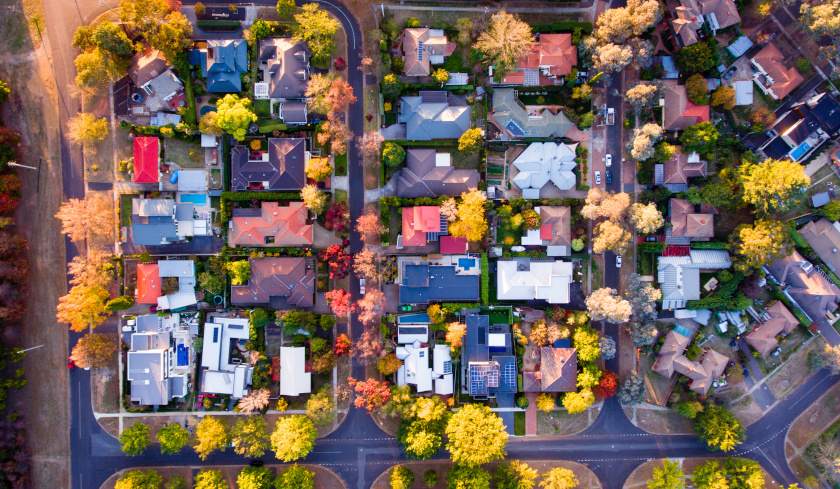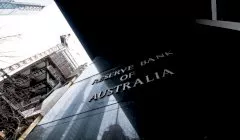Invest
We 'don't see' a housing shortage: ANU
A new study has argued that not only are reports of a housing shortage in Australia greatly exaggerated, there is actually an oversupply of dwellings.
We 'don't see' a housing shortage: ANU
A new study has argued that not only are reports of a housing shortage in Australia greatly exaggerated, there is actually an oversupply of dwellings.

A Regional Housing Supply and Demand Working Paper published by the Australian National University (ANU) indicated that there are up to 164,000 more homes in Australia than demand requires.
The conclusion was arrived at after the researchers took into account changing demographics and building types, and analysed 15 years’ worth of census data and building approvals and compared the underlying demand with actual supply to estimate the housing “gap”.
The said estimate was based on changes in the number of persons per household: For example, where the number of persons per household was higher, they deduced that underlying demand was greater than what was supplied to the market, and therefore there would be undersupply; and where the number of persons per household was lower, there was said to be an oversupply of housing in the region.
The ANU report found that between the years 2001 and 2017, there was an oversupply of 164,000 dwellings. However, there are “significant regional differences”, with some regions experiencing undersupply.

The majority of housing surplus is situated in inner-city regions of Australia’s major cities, with Sydney, Melbourne and Brisbane having oversupply due to “strong growth in unit developments”.
ANU associate professor Benjamin Phillips, who authored the working paper alongside researcher Cukkoo Joseph, said that he believed the study showed no evidence of a widespread shortage.
“The standard line of governments and industry seems to be that housing supply is a big problem in Australia,” Dr Phillips said. “No doubt there are some areas where it is. But, overall, we don’t see the housing shortage that’s often talked about. In fact, we see that there is a surplus.
“We appear to have built enough dwellings, and there’s an oversupply in some markets such as some parts of inner-city Sydney, Melbourne and Brisbane, which could have interesting implications for the economy.
“If this research is right, it suggests we’ve built enough dwellings, and there’s not likely to be any great gain in building more houses in addition to what’s required.”
Mr Phillip added that he does not believe housing supply has had a significant contribution to housing price growth.
“The surplus is not particularly substantial but certainly suggests that housing supply in and of itself is probably not the primary driver of house-price growth in Australia.”
According to the report, Queensland has the greatest housing surplus (59,800), followed by Victoria (40,400), Western Australia (25,100) and NSW (16,200).
Tasmania was the only state to record a housing shortage (-300).
The report concluded: “The lack of a housing shortage may have significant implications for housing policy in Australia and the economy more broadly.
“If Australia’s current record home-building levels are not balanced by a large housing shortage, then there is the risk that these current levels will reduce in the near future. Policymakers will also need to place greater emphasis on other potential drivers of house price growth and housing affordability, such as a range of demand influences.”
According to a Mortgage Choice investor survey, a quarter of property investors are concerned by rising property prices, with a third of investors also troubled by the cost of living.
"This would suggest [that] property investors are constantly looking to expand their portfolio of assets and, as such, don’t want property to become so expensive that it is out of reach,” John Flavell, Mortgage Choice CEO, said.
Additionally, CoreLogic head of research Cameron Kusher said in September that investors should expect a "further moderating" of returns over the following months.
He explained: "“The total returns data, particularly for the past decade, shows why housing investment has been so popular and hit record highs. Returns have been fairly consistent and less volatile than equities however; the ongoing strength and the evidence of a recent slowdown should give investors pause for thought.
“With mortgage rates starting to increase for investors, record-high levels of new housing supply and value growth slowing, housing investors shouldn’t assume that the types of returns seen over recent years will continue to be replicated going forward.
Mr Kusher said capital growth is "now appearing to have peaked" with rental yields at record lows.
"It is reasonable to expect a further moderating of total returns over the coming months."

Property
Retirement communities: a pivotal element in meeting Australia's housing targets
The Retirement Living Council (RLC) has recommended that retirement communities should be considered a vital part in the Australian Government's initiative to fulfill the Housing Australia Future Fund ...Read more

Property
Australians adjust financial strategies amid changing property market dynamics
The 2023 calendar year saw Australian borrowers acquiring a total of $300.9 billion in new loans for property purchases, marking a 12.7% decrease from the previous year. Read more

Property
Split home loans unlocking doors for Aussie buyers
Australians are teaming up to dive into the real estate market and seize the advantages of home ownership, with the trend of split home loans surging as family and friends unite to buy properties ...Read more

Property
Real estate investment: Spotting high-growth potentials
Investing in real estate has long been a favoured approach for Australians looking to grow their wealth. Read more

Property
Granny flats become Aussie families' cost-effective solution to soaring living costs
As the cost of living skyrockets, a forward-thinking trend is sweeping across Australia – granny flats are becoming a favoured living arrangement for older Aussies seeking comfort and proximity to ...Read more

Property
Homebuyers grapple with extended savings period amid affordability crisis
Gone are the days when an Australian dream home seemed just within reach. The path to homeownership in Australia has extended by at least two arduous years, as revealed by the latest insights from ...Read more

Property
Hybrid development unlocks new potential for NDIS housing in metro hotspots
In a ground-breaking strategy aimed at addressing the stark imbalance between the location of Specialist Disability Accommodation (SDA) developments and the actual areas of demand, Aligned Disability ...Read more

Property
Property prices boosted by housing policies: RBA
The central bank has outlined the “pervasive” impact that policy has on property. Read more

Property
Retirement communities: a pivotal element in meeting Australia's housing targets
The Retirement Living Council (RLC) has recommended that retirement communities should be considered a vital part in the Australian Government's initiative to fulfill the Housing Australia Future Fund ...Read more

Property
Australians adjust financial strategies amid changing property market dynamics
The 2023 calendar year saw Australian borrowers acquiring a total of $300.9 billion in new loans for property purchases, marking a 12.7% decrease from the previous year. Read more

Property
Split home loans unlocking doors for Aussie buyers
Australians are teaming up to dive into the real estate market and seize the advantages of home ownership, with the trend of split home loans surging as family and friends unite to buy properties ...Read more

Property
Real estate investment: Spotting high-growth potentials
Investing in real estate has long been a favoured approach for Australians looking to grow their wealth. Read more

Property
Granny flats become Aussie families' cost-effective solution to soaring living costs
As the cost of living skyrockets, a forward-thinking trend is sweeping across Australia – granny flats are becoming a favoured living arrangement for older Aussies seeking comfort and proximity to ...Read more

Property
Homebuyers grapple with extended savings period amid affordability crisis
Gone are the days when an Australian dream home seemed just within reach. The path to homeownership in Australia has extended by at least two arduous years, as revealed by the latest insights from ...Read more

Property
Hybrid development unlocks new potential for NDIS housing in metro hotspots
In a ground-breaking strategy aimed at addressing the stark imbalance between the location of Specialist Disability Accommodation (SDA) developments and the actual areas of demand, Aligned Disability ...Read more

Property
Property prices boosted by housing policies: RBA
The central bank has outlined the “pervasive” impact that policy has on property. Read more






